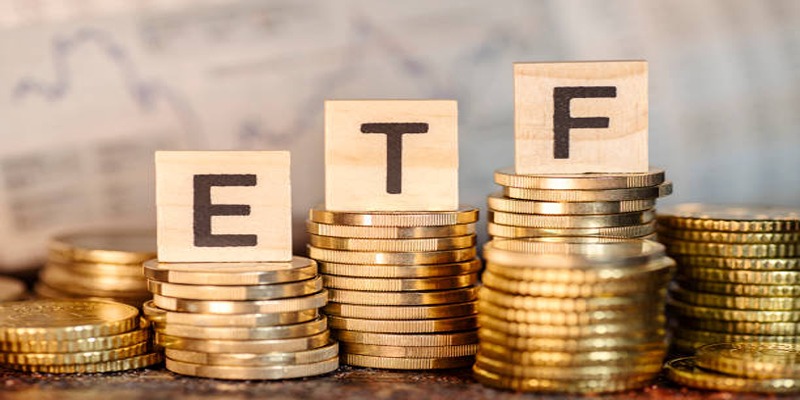Safeguard Your Investments with the Best Gold ETFs
Investing in gold can be a smart way to protect your portfolio during uncertain times. Gold is often seen as a safe option when markets are unpredictable, as it holds its value over time. Gold ETFs (Exchange-Traded Funds) make it easy to invest in gold without needing to buy and store it physically. This guide highlights top gold ETFs that can help you safeguard your investments from market ups and downs.
What are ETFs?

Exchange Traded Funds act as investment funds which function in stock exchanges similarly to stocks before them. Through these funds investors can access various asset types which include stocks commodities or bonds. The performance of gold along with its market spot price is what Gold ETFs employ to measure their value. People who want to invest in gold through a hassle-free process should consider this investment format because of convenience.
Benefits of Investing in Gold ETFs
- Diversification: One of the main benefits of investing in gold ETFs is diversification. As with any investment, it's important to spread your money across different assets to reduce risk. Gold has a low correlation with other assets, meaning it can help balance out the volatility in your portfolio.
- Low Cost: Compared to buying physical gold, investing in gold ETFs is relatively low-cost. You don't have to pay any storage or insurance fees, making it a more affordable way to invest in gold.
- Tax Benefits: Depending on where you live, there may be tax benefits associated with investing in gold ETFs. For example, in the United States, gains from selling gold ETF shares after holding them for at least one year are taxed as long-term capital gains, which is typically a lower tax rate than short-term gains.
Top Gold ETFs to Consider
SPDR Gold Shares (GLD)
SPDR Gold Shares (GLD) is one of the largest and most well-known gold ETFs in the market. It directly tracks the price of gold bullion and is highly liquid, making it a favorite among institutional and retail investors alike. While GLD has a slightly higher expense ratio compared to some other gold ETFs, its widespread acceptance and robust trading volumes make it an attractive choice for those looking for a reliable gold investment option. The fund's extensive history and large asset base underline its position as a trusted vehicle for gaining exposure to gold.
iShares Gold Trust (IAU)
The iShares Gold Trust (IAU) is another popular gold ETF that offers investors a low-cost option for gaining exposure to the price of gold. With an expense ratio lower than many other gold ETFs, IAU is a great choice for cost-conscious investors. It aims to reflect the performance of the price of gold bullion, minus expenses and liabilities. Additionally, its lower share price compared to some other gold ETFs makes it more accessible for those who are starting with smaller investments.
Aberdeen Standard Physical Gold Shares ETF (SGOL)
The Aberdeen Standard Physical Gold Shares ETF (SGOL) stands out for its transparency and emphasis on physical gold backing. SGOL provides investors with the security of knowing that the gold it holds is stored in secure vaults and regularly audited. This ETF tracks the price of gold closely and is a solid option for investors looking for a simple, secure way to invest in gold.
VanEck Merk Gold Trust (OUNZ)
The VanEck Merk Gold Trust (OUNZ) offers a unique advantage to investors by giving them the option to redeem their shares for physical gold. This flexibility appeals to individuals who may want to transition from ETFs to owning actual gold. OUNZ is designed to track the spot price of gold efficiently and is an appealing choice for investors seeking both convenience and the potential to hold physical gold if desired.
Graniteshares Gold Trust (BAR)
The Graniteshares Gold Trust (BAR) is known for its ultra-low expense ratio, making it one of the most cost-effective gold ETFs on the market. BAR seeks to track the price of gold and provides an affordable way for investors to gain exposure to gold as a part of their broader portfolio. This ETF is especially attractive for long-term investors seeking to minimize costs while maintaining exposure to gold.
Factors to Look for When Choosing a Gold ETF
- Expense Ratio: As with any investment, it's important to pay attention to the expense ratio of a gold ETF. This fee is charged annually and affects the overall return on your investment.
- Liquidity: A high trading volume in an ETF is an indicator of liquidity. Look for ETFs that have robust trading volumes to ensure you can easily buy or sell shares when needed.
- Physical Backing: Some gold ETFs offer physical backing, meaning they hold actual gold bullion. This can provide additional security for investors who want to make sure their investment is backed by tangible assets.
- Asset Size: The size of an ETF's asset base can give you an idea of its popularity and acceptance in the market. Larger assets may indicate a more established and reliable ETF.
- Performance History: While past performance is not a guarantee of future results, it can be helpful to look at an ETF's track record before investing. Look for consistent returns over time to gauge the fund's overall performance.
Conclusion
Gold ETFs can serve as an effective investment option for those looking to gain exposure to gold without buying physical gold. They offer benefits such as diversification, liquidity, and low cost, making them attractive options for both retail and institutional investors. When choosing a gold ETF, consider factors such as expense ratio, liquidity, physical backing, asset size, and performance history to make an informed decision. As with any investment, it's important to do your research and consult with a financial advisor before making any decisions.













